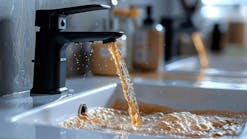Turn on a television, open a newspaper or look at your Facebook feed and you are likely to read about a water crisis somewhere in the world. Cape Town, South Africa, is a prime example and currently is experiencing a record water shortage, which has forced the city to mandate a daily allowance of 50 liters per person per day. Drought conditions that are worse than anything Cape Town has experienced in more than 100 years are forcing the residents of South Africa’s second most populated urban area to take drastic measures to reduce their water consumption. In the U.S., California experienced severe drought conditions in 2016, which killed millions of trees and contributed to several devastating wildfires. In an effort to combat the effects of water shortages and to be proactive about conservation, many government agencies have created programs to deal with this growing concern.
Conservation Efforts
In 2006, the U.S. EPA created WaterSense, a voluntary program designed to help Americans conserve water. The WaterSense program seeks to offer a simple way to use less water by setting flow limits for participating manufacturers’ lavatory faucets, toilets, pre-rinse spray valves, irrigation controllers, urinals and shower heads. According to EPA, the program has saved 2.1 trillion gal of water since its inception.
The California Energy Commission (CEC) has similar mandatory requirements for water conservation. Their program mandates that plumbing fittings sold in the state must meet strict flow and flush volumes. Unlike EPA’s WaterSense program, failure to meet the requirements of the CEC’s program can result in substantial fines. It is clear that the U.S. government is taking water conservation seriously and the water savings have been substantial.
While federal and state programs, such as WaterSense and the CEC’s requirements, have been successful in reducing water use, it is important to examine the downstream effects of those savings. Standard methods for waste pipe sizing are based on outdated flow rates and water requirements, which makes the pipes less effective at moving waste under today’s lower water demands. Newer water-efficient toilets are designed to evacuate the bowl with less water, but the ability of the pipe to carry the solid and liquid waste also should be taken into consideration. The lower volume of water flowing through the pipes can cause solids to accumulate in the system and blockages in building drain lines and public sewers, resulting in backups and added maintenance costs. Older drain lines may be made of materials that can corrode as bacteria grows, while the waste flows more slowly through the pipe or the pipe is blocked altogether.
Supply & Demand
While it is important to consider the downstream effects of water conservation, it is perhaps more important to consider the effects on the upstream supply. When a boil-water advisory is issued for an area, it is a reminder of one of the modern conveniences that we take for granted: clean, drinkable water straight from the tap. One of the keys to being able to deliver drinkable water to the tap is the ability to effectively disinfect the water. Chlorine and chloramines are effective disinfection agents used by municipalities at water treatment plants, as well as water storage points in larger distribution systems. These disinfectants are dosed in precise concentrations that have been calculated to balance effective disinfection with taste, odor and health impacts.
While these chemicals are effective disinfectants, their efficacy decreases with time, elevated temperature and exposure to sunlight. Because of this effect, there is a lower concentration of disinfection agent the longer the water is unused. If water demand is significantly reduced due to low-flow plumbing products, it could lead to lower concentrations of disinfection agent over time, and may result in chlorine dissipating before the water is used. Some parts of the distribution system may not be effectively disinfected in this scenario, which causes a health risk to the population. Simply increasing the concentration of disinfectant is not a solution because the concentrations could be too high in other parts of the system.
Recognizing Risks
Current research is aimed at understanding the relationship between lower flow velocities and the growth of microbes and biofilm on the internal surfaces of plumbing systems. If an excessive amount of biofilm is allowed to form, it can accelerate the degradation of disinfection chemicals and is an ideal place for bacterial growth.
One particularly dangerous bacteria known to grow in poorly maintained water systems is Legionella. Legionella can cause a serious type of lung infection called Legionnaires’ disease when particles of water containing Legionella bacteria are inhaled. The most common ways that the particles are inhaled is through water from showering, decorative fountains and cooling towers used as part of an air conditioning system. Legionnaires’ disease is particularly dangerous for those with a compromised immune system, including the elderly, and is linked to thousands of deaths per year.
While water conservation will continue to be an important focus for the plumbing industry in the coming years, it is important to foresee the consequences of reducing the flow of water through plumbing systems. We must determine the lowest flow rates possible for minimizing the impacts on health, safety and the performance of plumbing systems. The best solution only can be found when we identify what potential tradeoffs may exist.



